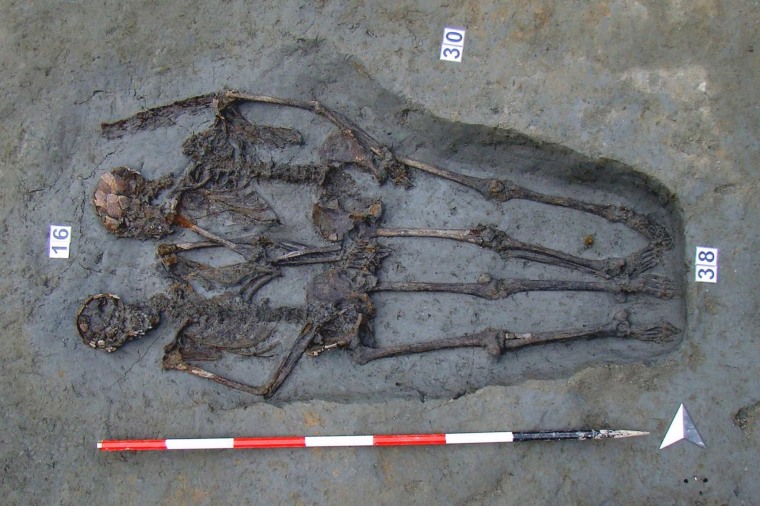After 10 years of analysis, researchers have discovered that the “Lovers of Modena,” a pair of ancient skeletons who were buried holding hands, were both men.
Though the bones, which date back to between the 4th and 6th century AD, were found in a cemetery near Modena, Italy, in 2009, scientists were previously unable to establish the sex of the pair — despite repeated attempts using genetic analysis techniques — because they were not well preserved enough.
Yet a breakthrough came after researchers from the University of Bologna developed a new technique using the protein found in tooth enamel, called enamel peptides, to determine their sex. They shared their findings this week in the journal Scientific Reports.
“We suggest that the ‘Lovers of Modena’ burial represents a voluntary expression of commitment between two individuals,” rather than a recurring burial tradition in the Late Antiquity, the researchers wrote in the study’s abstract. “The presence of several injured individuals within the Ciro Menotti necropolis let us suppose the destination of this place as a cemetery.”
The discovery of two individuals buried hand-in-hand is not a new occurrence. The hand-holding Lovers of Valdaro, who died nearly 6,000 years ago, were buried in Italy’s northern province of Mantua, and there have been similar findings in other countries, including Greece, Turkey, Romania and Siberia.
The authors could not say definitively whether the so-called Lovers of Modena had once been a romantic couple, though they wrote that they could not “exclude that these two individuals were actually in love.” According to them, it would have been unlikely for the people who buried the pair to position their bodies hand in hand as Late Antique social attitudes and Christian religious mores did not allow for openly gay relationships at the time.
Despite the uncertainty surrounding the nature of the skeletal pair’s relationship, however, researchers believe that their discovery is the first example of an embracing male-male skeletal pairing.
“There are currently no other examples of this type,” Federico Lugli, the lead author of the study, told Italy’s Rai News. “Many tombs have been found in the past with couples holding hands, but in all cases there was a man and a woman. What might have been the bond between the two individuals in the burial in Modena remains a mystery.”



